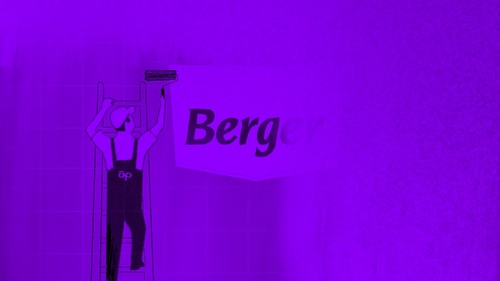If I ask you to recollect any one experience with the Indian Railways, there's a good chance you may end up telling me how the IRCTC website would never load when you were booking a Tatkal ticket. Or if you're among the lucky ones, you'd narrate your fabulous victory when you actually booked a Tatkal ticket!
Of course we're all familiar with the IRCTC, yet how it functions is a big blackbox for most of us.
You've possibly visited the IRCTC website tons of times, even seen their logos embedded on train coaches or products sold on the railway platform. But I bet you'd know very little about what the company does or how it performs as a business!
But worry not, we've got your back here. This article is the deep dive on IRCTC you've always wanted to read :)
Firstly, a bit of background about IRCTC
Indian Railways by itself is a beast. It has its own central ministry, an annual budget and employs 1.4 million people.
Back in 1999, the Indian Railways was looking for a partner to manage and improve its catering, hospitality & tourism. So, they gave birth to their own partner organization, IRCTC, short for Indian Railways Catering & Tourism Corporation. See, the name itself gives away what exactly the company is supposed to do 😛
When IRCTC was founded, its goals were very well laid out:
- Offer convenience to passengers traveling in trains through online ticket booking, food services etc.
- More importantly, make Indian Railways’ customer service more efficient
- And as a result, bring more revenue for the Railways
So, IRCTC is the organization created by the government and for the government. But, this relationship between IRCTC and the government isn’t as simple as it seems. And it heavily impacts IRCTC’s business, both positively & negatively, as we’ll see later.
Got it, and is IRCTC doing well as a business?
To answer that, let’s look at some of IRCTC’s numbers. In the 3rd quarter of FY22, IRCTC had:
- Revenue: INR 540 Cr
- Profits: INR 209 Cr
- Profit margin: ~40% 🤯
These numbers are almost unreal for an e-commerce company! To give you some perspective, let’s look at India’s other top e-commerce companies:
- Flipkart loses INR ~1300 Cr every quarter, on a revenue of INR ~12,500 Cr
- Amazon loses INR ~1200 Cr every quarter, on a revenue of INR ~5000 Cr
You know, when I first realized this huge discrepancy, I thought to myself - maybe it’s because IRCTC is the oldest e-commerce player in India. Maybe they know some tricks that Amazon & Flipkart are yet to figure out?
Don’t worry, I am just pulling your leg there! The real reason is quite sound and convincing 😎
So tell me, what’s the secret behind IRCTC’s magical numbers?
When the Indian Railways created its own partner organization, it also laid down some rules that affected all the potential competing businesses of IRCTC.
IRCTC is the ONLY company authorized to:
- Sell railway tickets online
- Provide catering on trains
- Distribute packaged drinking water at stations and on trains
Put simply, IRCTC has 0 outside competition. Zilch!
Naturally, consumers have no other choice, and are forced to buy everything from IRCTC. At the same time, IRCTC never has to spy on any competitor's moves or fight with them on prices.
Suddenly, the profit numbers we saw before don’t seem unreal anymore.
Now, it’s interesting at this point to also look at how IRCTC is split as a business. There are 4 key segments or business units:
- Online ticketing, brings IRCTC 57% of total revenue
- Catering i.e. food on trains & stations, brings another 29% revenue
- Packaged drinking water, 7% revenue
- Travel & Tourism e.g. holiday packages, another 7% revenue
You see, when IRCTC sells holiday packages, the government can’t prohibit other companies from doing so. This business unit lies outside of “railways” and hence, IRCTC faces stiff competition here from the likes of MakeMyTrip, Booking .com etc.
And clearly, travel & tourism is the least revenue generating unit for IRCTC.
Wow, so IRCTC must be growing its business & making tons of money year over year?
Well, yes and no!
IRCTC functions just like any other business, trying to maximise its revenue & profits.
For instance, until 2018, IRCTC charged online aggregators like Paytm, MakeMyTrip etc. only a one-time fee of INR 20 lakhs and an annual maintenance fee of INR 10 lakhs.
But in 2018, they removed the annual maintenance fee and introduced a charge of INR 12 per ticket [1]. This was a smart business move, let's see why.
- Let's take the example of Paytm, which has the highest share in ticket bookings at IRCTC. Paytm sells 14% of total train tickets [2].
- For 2021-22, a total of ~42 Crore tickets were sold [3].
- So, Paytm sold 42 Crore * 14% = 5.88 Crore tickets.
- Therefore, IRCTC earns a revenue of 5.88 Crore * INR 12 = ~INR 70 Crore from Paytm!
What was a mere INR 10 lakh of maintenance fee, has now become a revenue of INR 70 Crore for IRCTC.
Of course, Paytm or any other payment/travel company has to willingly or unwillingly adhere to this change, since IRCTC has full monopoly in the business of railway tickets.
Now, that's the "good" part of being a monopoly business. But, IRCTC also faces the brunt of being influenced or controlled by the government.
So, how exactly does the government's control affect IRCTC?
Let me explain this with an example.
IRCTC earns money by charging a convenience fee for booking tickets online. A part of this fee has to go to the government depending on, well, the government's wish.
Here's what's happened over the years:
- Until 2014, the revenue sharing percentage was 20%
- Then in 2015, the government changed it to 50%
- But in 2016, in a radical policy to promote online sales, the government mandated IRCTC to waive off convenience fees entirely — 100s of crores of revenue wiped off!
- Then in 2019, the government reinstated the convenience fees but IRCTC didn't need to share any revenue with the government [4]
- And finally in 2021, the government went back to 50% revenue sharing again
Now, these sudden changes were still all fine, until the government owned IRCTC completely. But, in 2019, the government did an IPO of IRCTC and sold 12.5% of its stake.
So, when in 2021, the government suddenly announced that it will take 50% of convenience fees revenue from IRCTC, the share price crashed by over 20%.
Let's look at some numbers to understand the exact impact of this move.
- IRCTC earned INR 350 Cr in 2019-20 & INR 300 Cr in 2020-21 from convenience fees.
- Even taking the best case of INR 400 Cr earned, the government would make INR 200 Cr from it, with the 50% revenue sharing model.
- But, with the sudden policy change, IRCTC's share price dropped from a peak of INR 1093 to INR 846 in less than 2 weeks. As a result, IRCTC lost close to INR 20,000 crores in market value.
- With the government holding 67.5% of stake in IRCTC at the time, they ended up losing ~INR 14,000 crores in the process!
Seems like a lose-lose situation for everyone involved. And as you see, IRCTC had no say in the matter. The policy dictates what revenue IRCTC needs to share with the government and when.
In summary, IRCTC enjoys the benefits of being a monopoly, but also operates on the wishes of the government. This equation will likely not change even in the future, as indicated multiple times by the government.
But, there will surely be more interesting events in its journey, and we're waiting for that to happen, so that we can serve you some more fresh, hot analysis! 😉









